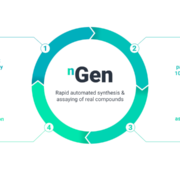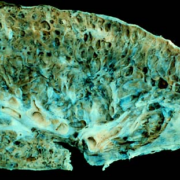Inverna Therapeutics, a Danish biotech company, has officially launched to develop innovative RNA-based therapies targeting severe genetic diseases. Co-founded by the University of Southern Denmark and Argobio, Inverna will focus on its lead programme addressing Huntington’s disease.
ADVERTISEMENT
Verdiva Bio, a London-based biotech, has raised an extraordinary US$410m in its oversubscribed Series A round, making it potentially the largest Series A ever raised by a U.K.-based biotech company, according to CEO Khurem Farooq.
A US$67.5m Series B financing in XyloCor Therapeutics led by French Jeito Capital will fund two double-blind Phase 2 trials for XC001, a pioneering gene therapy for severe cardiovascular disease.
The aim of this unique initiative, part of the so-called Generation Study, is to sequence the genomes of 100,000 newborns in England to enable the early detection of over 200 selected conditions and to accelerate the treatment of rare diseases.
WuXi Biologics has agreed to sell its Dundalk vaccine manufacturing facility to Merck, a move that will enhance asset efficiencies and allow the company to focus on CDMO services at its other global sites.
Orbis Medicines secures €90m in Series A funding to accelerate the development of oral macrocycle drugs, leveraging automated chemistry and machine learning.
Thank you for a successful 2024!
In parallel with the expansion of its collaboration with SK Bioscience Co. Ltd, the French pharmaceutical company Sanofi SA has announced Phase III testing of its licensed pneumococcal conjugate vaccine PCV21.
Screening a library of 712 market-approved drugs, German researchers have found that a cough medicine most efficiently reduced incurable lung fibrosis in mice and in vitro.
Novo Nordiks has licenced Photys Therapeutics PHICS platform to target a single cardiometabolic target. Photys got US$186m upfront.


 Justlight, AdobeStock
Justlight, AdobeStock Jeyaratnam Caniceus/Pixabay.com
Jeyaratnam Caniceus/Pixabay.com XyloCor Therapeutics
XyloCor Therapeutics 123rf.com/valentinakru
123rf.com/valentinakru IPS-Integrated Project Services, LLC / WuXi Biologics
IPS-Integrated Project Services, LLC / WuXi Biologics Orbis Medicines
Orbis Medicines pixabay.com - geralt
pixabay.com - geralt SK Bioscience
SK Bioscience wikioedia.org - Von http://web2.airmail.net/uthman/specimens/index.html, Gemeinfrei, https://commons.wikimedia.org/w/index.php?curid=841015
wikioedia.org - Von http://web2.airmail.net/uthman/specimens/index.html, Gemeinfrei, https://commons.wikimedia.org/w/index.php?curid=841015 Photys Therapeutics
Photys Therapeutics